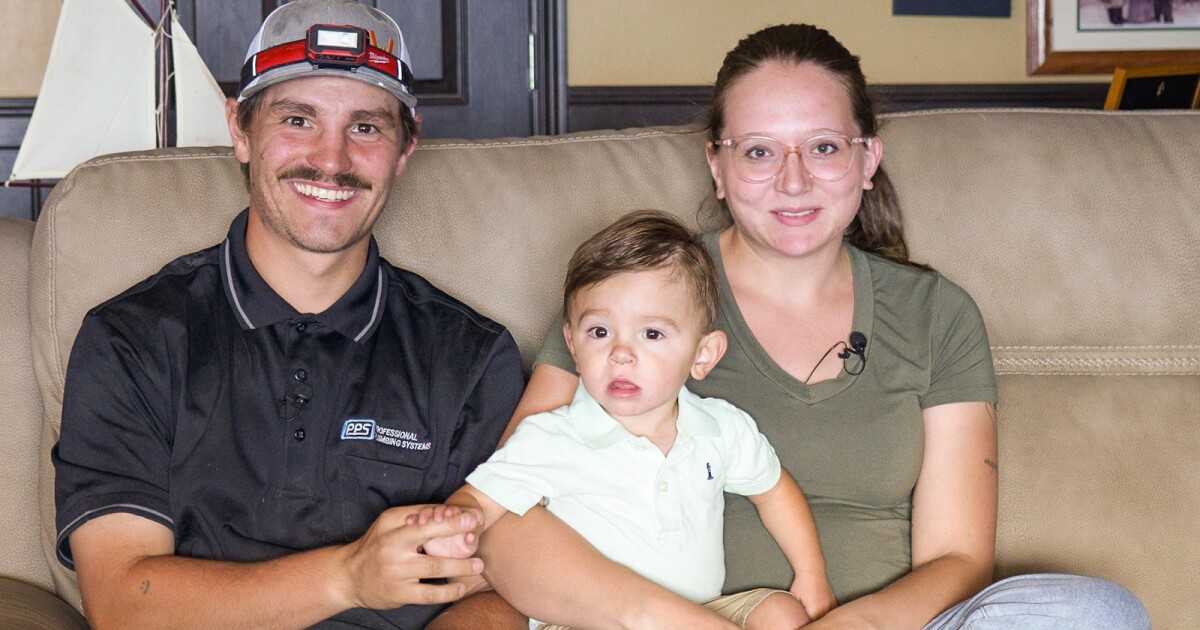Over the past few months, the Institute for Disability Research, Policy and Practice has been interviewing families about how early intervention is impacting the lives of Utahns. Many of the families who have received services say it has been life-changing. But providers struggle with heavy workloads and high turnover.
“We were told it was actively damaging his brain, meaning all of his brain, his blood, was killing all of these healthy brain cells. It was just devastating,” Courtney Schweinler said.
Courtney and Dylan Schweinler of Utah County remember the early childhood of their son, Theo, who was born three months prematurely and suffered a brain hemorrhage shortly afterward at the hospital, beginning their family’s early intervention journey.
“I think almost half of the left side of his brain is completely dead, but that’s how it seems to me when I look at him now,” Courtney said.
“You never know,” Dylan Schweinler said.
“You’d never know this, but we were referred to early intervention through Kids Who Count and started working with amazing therapists there,” Courtney said.
The Schweinler family’s experience stands out: They knew about early intervention long before it was necessary because Courtney’s mother works in the field. They received services from professionals with years of experience, and treatment began immediately in the NICU.
“I think the only thing he’s still developmentally behind is the way he walks and the way he talks. … That’s what everyone thinks, at least they’re saying there’s nothing to worry about and that he’ll catch up with time,” Dylan said.
Families across Utah receive early intervention services, but some programs struggle to provide that level of care.
“We also serve Washington County, and San Juan County is new for us, but that’s a whole other story,” Crystal Ghika said.
This is Crystal Ghika, director of early intervention at Root for Kids. The organization provides a variety of services, including early intervention, to children in Washington and San Juan counties. These early intervention services vary greatly between the St. George area and San Juan County. San Juan is trickier.
“It’s the largest county in the state, but it only has four grocery stores. It’s very rural. … We have a bilingual person. She’s a service coordinator, she speaks Navajo and English, and she coordinates services for all the families there. She travels a lot. … We have an occupational therapist who comes in once a month and everything else has to be supported virtually,” Ghika said.
Funding for both counties is a big issue for Ghika, which I will address in the next article in this series. For now, I will focus on the workload that is mandated by law as well as funding.
“I work for organizations that do other home visiting programs, where staff are taking on 10 to 12 cases and are full, and there is a waiting list because some people leave and other families are taken in. In our program, we have to take everyone in and our caseload is around 40,” Ghika said.
So what does that mean for the service? I spoke to Gika about the Schweinler family’s success.
“In the first case, such a child would require more than 1.75 visits per month, and that is the limit of our funding.”
“Despite limited funding, I think we’re doing the best we can to serve families across the state, and I think most families would agree that it’s life-changing,” Ghika said.
So, could Ghika lose his job?
“No, no. As long as we can afford to keep the store open.”

